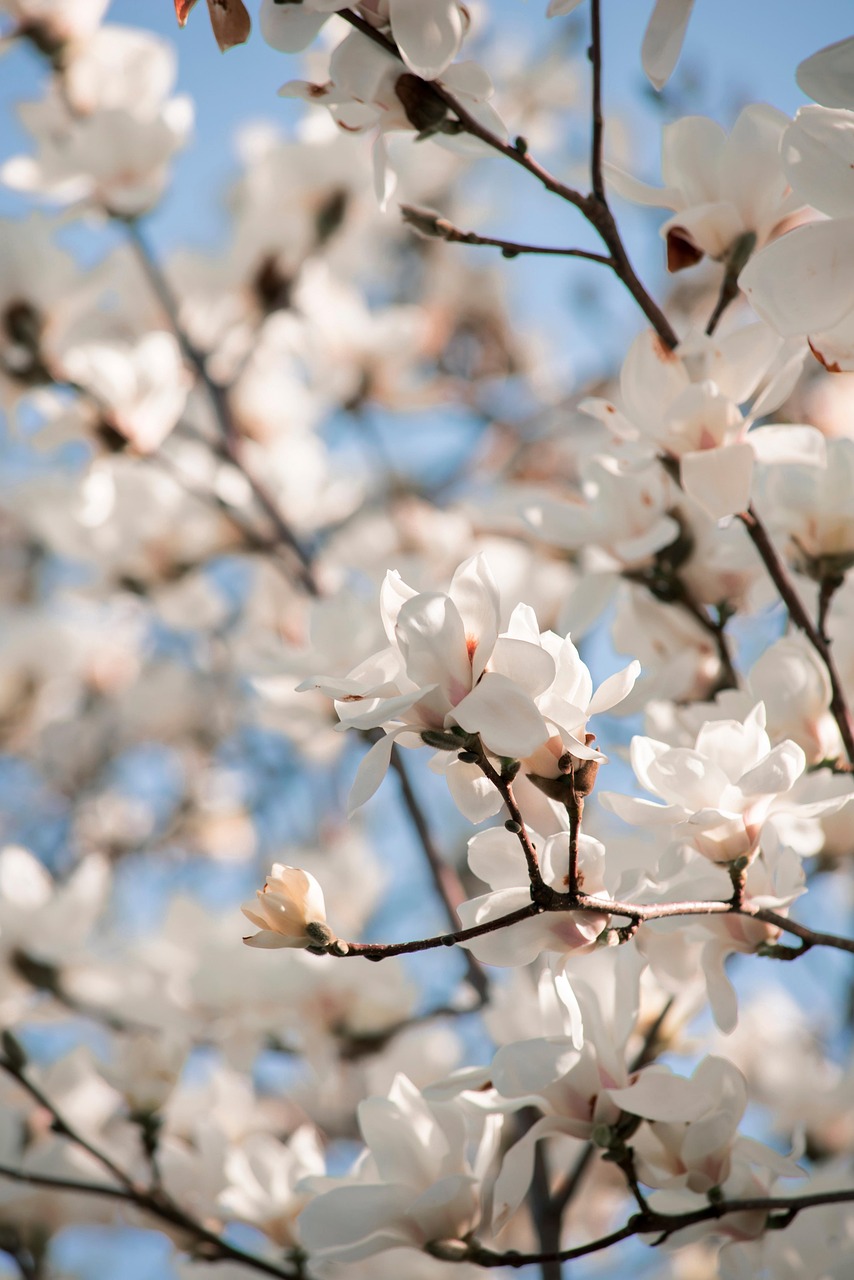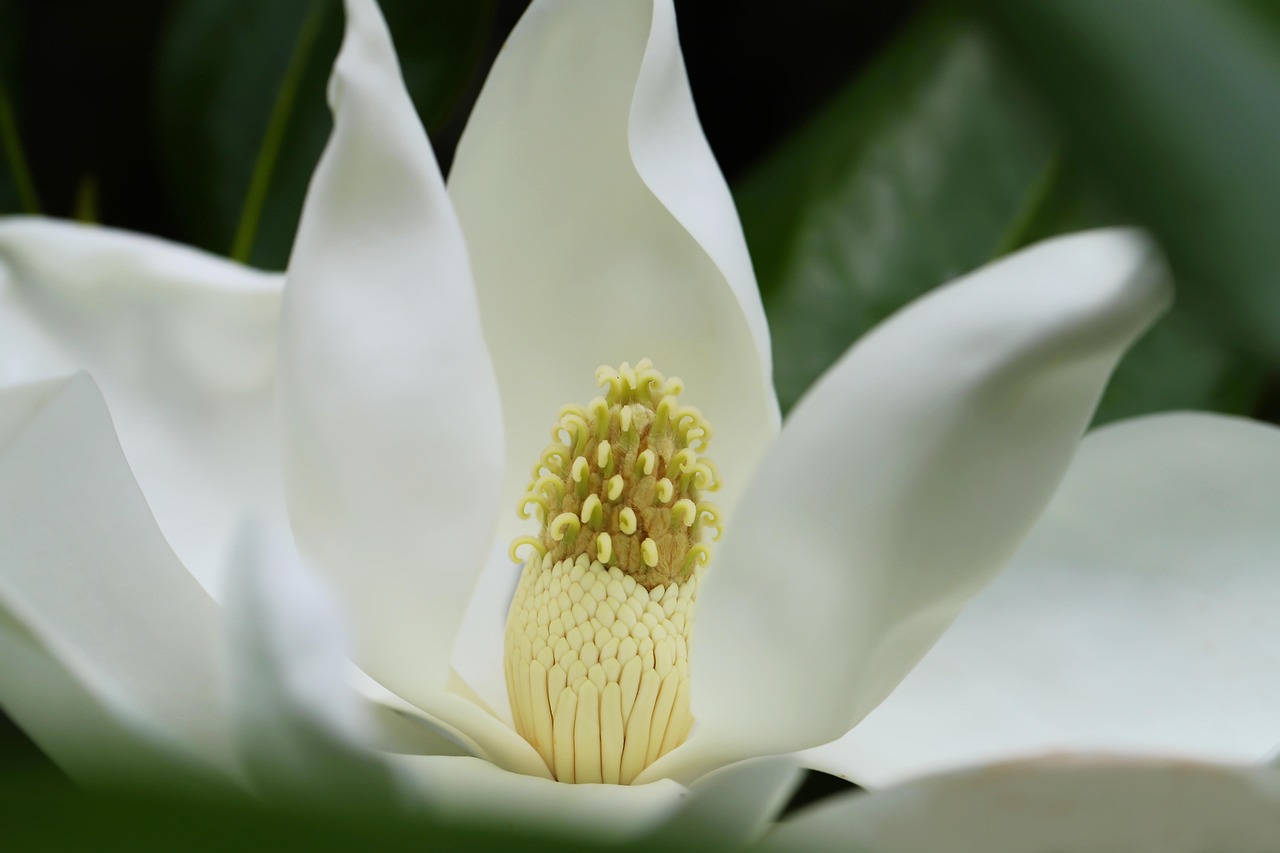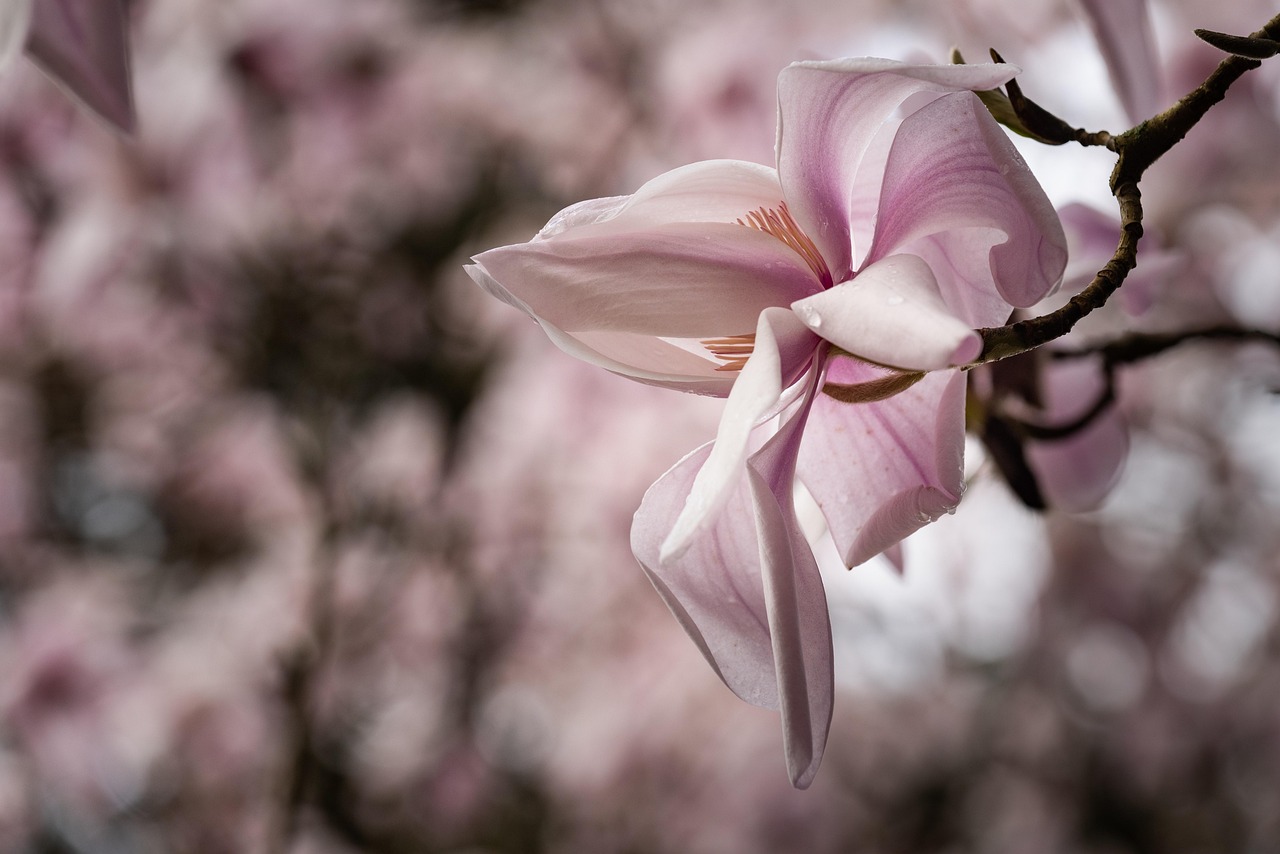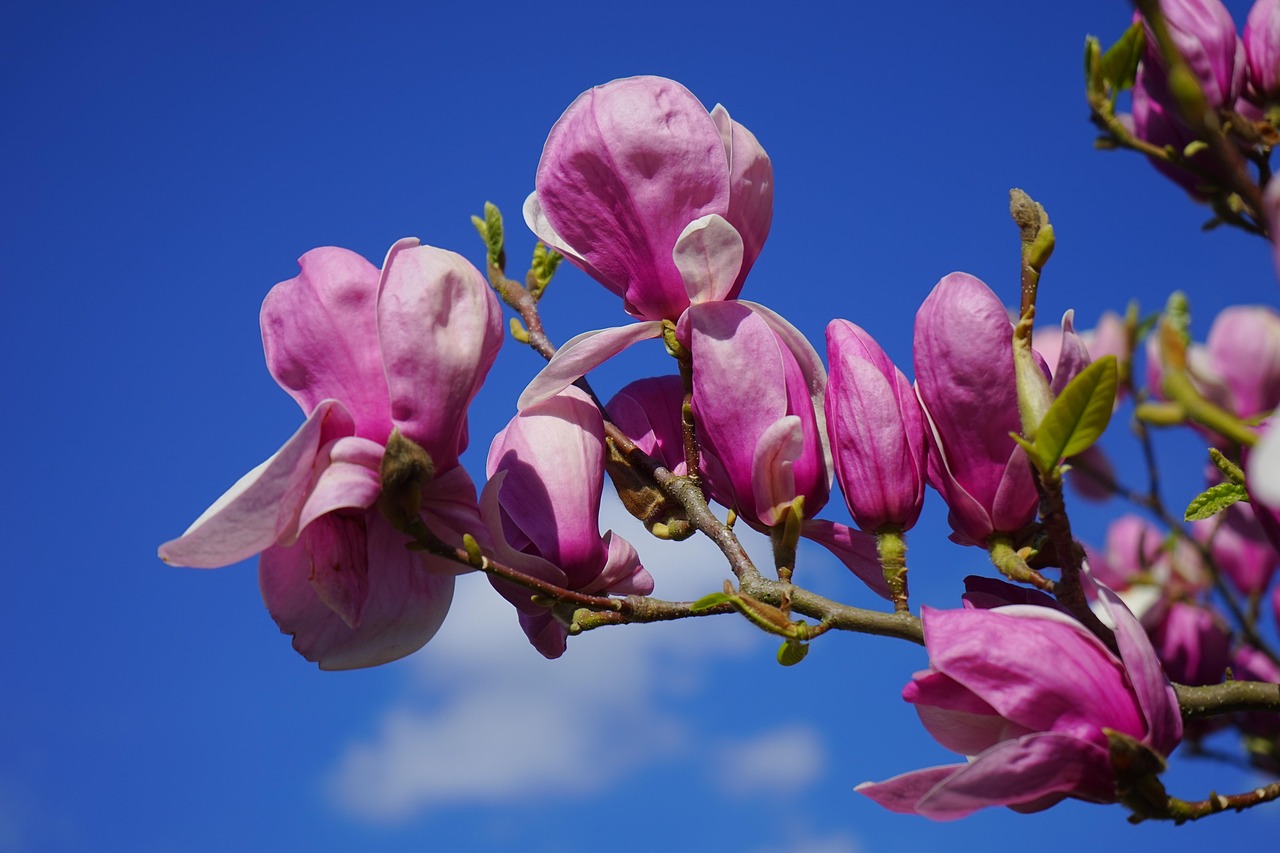Magnolia tree flowers bloom in early spring, typically between March and May, depending on the species and climate. To fully enjoy their beauty, visit gardens or parks during this peak period. Early morning is ideal for viewing, as the light enhances the flowers’ colors and fragrances.
Understanding Magnolia Trees
Magnolia trees are renowned for their stunning flowers and fragrant blooms. They belong to the Magnoliaceae family and encompass around 210 different species. These trees are native to Asia and the Americas, thriving in various climates. Their impressive size and striking blossoms make them a popular choice for landscaping in many regions.

The flowers of magnolia trees come in various shapes and sizes. They can be large, cup-shaped blooms or small, tulip-like structures. The colors range from white to shades of pink, purple, and yellow. Each species features unique characteristics, making them fascinating to study and appreciate.
Key Species of Magnolia Trees
There are several well-known species of magnolia trees. Each has its own blooming period and flower characteristics. Here are some prominent species:
| Species | Common Name | Blooming Period | Flower Color |
|---|---|---|---|
| Magnolia grandiflora | Southern Magnolia | Late Spring to Summer | White |
| Magnolia stellata | Star Magnolia | Early Spring | White or Pink |
| Magnolia liliflora | Lily Magnolia | Early Spring | Purple or Pink |
| Magnolia x soulangeana | Saucer Magnolia | Early Spring | Pink or White |
The Southern Magnolia is particularly iconic in the southern United States. It produces large white flowers and remains evergreen all year round. The Star Magnolia, on the other hand, is favored for its delicate white flowers that appear even before the leaves emerge.
The Significance of Magnolias in Culture

Magnolias hold significant cultural importance in many societies. They symbolize dignity and nobility, often associated with purity due to their beautiful blooms. In some cultures, magnolias are linked with love and femininity, making them popular choices for weddings and other celebrations.
In addition to their aesthetic appeal, magnolias also provide ecological benefits. They attract pollinators such as bees and butterflies, contributing to the health of local ecosystems. Their large leaves provide shade and support wildlife, making them vital components of their habitats.
How to Enjoy Magnolia Blooms

To truly appreciate magnolia blooms, consider these tips:
- Visit botanical gardens or parks known for their magnolia collections.
- Plan your visit during the peak bloom season, typically in early spring.
- Take photographs in the early morning light for the best results.
- Engage your senses by noticing the fragrance of the flowers.
- Participate in local events celebrating magnolia blooms if available.
By following these suggestions, you can enhance your experience of witnessing these magnificent flowers in full bloom. Whether you are a nature enthusiast or simply looking to enjoy a beautiful day outdoors, magnolia trees offer a stunning spectacle each spring.
Environmental Conditions for Magnolia Growth
Growing magnolia trees successfully requires understanding their preferred environmental conditions. These trees thrive in specific climates and soil types. Proper care can lead to healthier trees and more abundant blooms.
Climate Requirements
Magnolias generally prefer temperate climates. Here are some key climate factors to consider:
- Temperature: Magnolia trees flourish in areas where winter temperatures do not drop below -10°F (-23°C). They require a warm growing season to produce blooms.
- Sunlight: Full sunlight is ideal for magnolias. Aim for at least six hours of direct sunlight per day to encourage flowering.
- Humidity: Moderate humidity levels help magnolia trees thrive. However, they can adapt to various humidity levels as long as they receive adequate water.
Soil Preferences
The soil quality plays a critical role in the health of magnolia trees. Here are some soil characteristics that are beneficial:
- Well-drained Soil: Magnolias do not tolerate standing water. Ensure that the soil drains well to prevent root rot.
- Acidic to Neutral pH: A pH level between 5.5 and 7.0 is optimal for magnolias. Testing the soil can help determine if amendments are necessary.
- Organic Matter: Incorporating organic matter, such as compost, can enhance soil structure and provide essential nutrients.
Planting Magnolia Trees
If you are interested in planting magnolia trees, proper techniques will ensure their successful growth. Here are steps to consider for planting:
Choosing the Right Location
Select a location with ample sunlight and good drainage. Avoid low-lying areas where water may accumulate. Ensure the selected spot has enough space for the tree to grow both in height and width.
Step-by-Step Planting Guide
- Prepare the Site: Clear the area of weeds and debris. Dig a hole that is twice as wide as the root ball but not deeper than the ball itself.
- Add Amendments: If your soil lacks organic matter or is too compact, mix in compost or peat moss to improve its structure.
- Position the Tree: Place the magnolia in the center of the hole, ensuring that the top of the root ball is level with or slightly above the surrounding soil.
- Backfill with Soil: Gently fill in around the roots with soil, avoiding air pockets. Water thoroughly to help settle the soil.
- Mulch: Apply a layer of mulch around the base of the tree to retain moisture and suppress weeds.
Caring for Magnolia Trees
<pOnce established, magnolia trees require ongoing care to thrive and bloom beautifully. Here are essential care tips:
Watering Needs
Magnolia trees prefer consistently moist soil. However, it is crucial to avoid overwatering. Here are some watering guidelines:
- Water deeply once a week during dry spells.
- Monitor the soil moisture to determine when to water; the top inch should be dry before watering again.
Fertilization
Applying fertilizer can help promote healthy growth and flowering. Consider these tips:
- Use a slow-release, balanced fertilizer in early spring before new growth begins.
- Avoid fertilizers high in nitrogen, as they can lead to excessive leaf growth at the expense of blooms.
Pest and Disease Management
Magnolia trees can be susceptible to certain pests and diseases. Here are some common issues and remedies:
- Pests: Watch for scale insects and aphids. Use insecticidal soap or horticultural oil to manage infestations.
- Diseases: Root rot can occur in overly wet conditions. Ensure proper drainage and avoid overwatering to prevent this issue.
Caring for magnolia trees involves understanding their specific needs. By providing suitable environmental conditions, planting correctly, and offering ongoing care, you can enjoy their magnificent blooms for many years to come.
Magnolia Flowers and Their Unique Characteristics
The beauty of magnolia flowers is not only in their stunning appearance but also in their unique characteristics. Understanding these features can enhance your appreciation for these trees and their blooms.

Flower Structure
Magnolia flowers exhibit fascinating structures that vary by species. Here are some key aspects of their anatomy:
- Petals: Magnolia petals are often thick and waxy, giving them a robust appearance. They can range from six to twelve petals depending on the species.
- Color Variations: Colors can include white, pink, purple, and yellow. Some species have flowers that change color as they mature.
- Fragrance: Many magnolia flowers are known for their pleasant scent, which varies by species and time of day.
Blooming Phases
The blooming cycle of magnolia flowers typically occurs in stages. Here’s what to expect:
- Bud Formation: In late winter, buds begin to swell. This stage is critical as the tree prepares for blooming.
- Opening Buds: As temperatures rise in early spring, buds start to unfurl, revealing the first glimpses of blossoms.
- Full Bloom: The peak blooming period varies by species but generally occurs from March to May. During this time, the flowers are at their most vibrant.
- Petal Drop: After a few weeks, petals begin to fall, marking the end of the blooming season for that year.
Best Practices for Enjoying Magnolia Blooms
Experiencing magnolia blooms can be a delightful activity. Here are some best practices to ensure you enjoy these flowers to the fullest:
Timing Your Visit
To witness magnolia trees in full bloom, timing is essential. Consider these factors:
- Local Climate: Be aware of your local climate conditions as they significantly affect bloom timing. Warmer regions may see earlier blooms than cooler areas.
- Check Local Resources: Many botanical gardens and parks provide updates on bloom status. Utilize these resources to plan your visit.
Choosing the Right Viewing Location
Selecting an ideal location can enhance your experience. Here are tips on where to go:
- Botanical Gardens: These often have dedicated magnolia collections, showcasing various species.
- Parks with Magnolias: Local parks may feature magnolia trees that provide a lovely setting for viewing.
- Cultural Events: Some communities hold festivals celebrating magnolia blooms, offering additional activities and scenery.
Photography Tips for Magnolia Flowers
If you wish to capture the beauty of magnolia blooms, here are some photography tips:
Optimal Lighting Conditions
The quality of light can dramatically affect your photographs. Consider the following:
- Golden Hour: Early morning or late afternoon light provides a warm glow that enhances colors.
- Avoid Harsh Midday Sun: Bright sunlight can create harsh shadows and overexposed highlights, detracting from the beauty of the blooms.
Composition Techniques
The way you frame your shots can make a significant difference. Here are some composition techniques to try:
- Focus on Details: Capture close-ups of individual blooms to showcase their intricate features.
- Create Depth: Use natural elements like branches or leaves in the foreground to add depth to your images.
- Experiment with Angles: Try shooting from different angles, including low or high perspectives, to find unique views of the flowers.
Culinary Uses of Magnolia Flowers
Interestingly, some magnolia species have culinary applications. The petals and other parts of certain magnolias can be used in various dishes. Here are some examples:
- Magnolia Blossoms in Salads: The petals of certain magnolia varieties can be used as a colorful garnish in salads.
- Tea Infusions: Dried petals can be steeped to create herbal teas with distinct flavors and aromas.
- Candied Petals: Some culinary enthusiasts enjoy candied magnolia petals as a sweet treat or decoration for desserts.
This exploration into the unique characteristics, best practices for enjoyment, photography tips, and culinary uses of magnolia flowers reveals a multi-faceted appreciation for these remarkable trees. Engaging with magnolias offers not only aesthetic pleasure but also opportunities for culinary creativity and memorable experiences in nature.
Further Cultural Significance of Magnolias
Magnolia trees hold a special place in various cultures around the world. Their beauty and symbolism extend beyond mere decoration, as they are often associated with deeper meanings and traditions.
Symbolism in Different Cultures
In many cultures, magnolias symbolize purity, dignity, and nobility. Here are a few cultural interpretations:
- Asian Cultures: In Chinese culture, magnolias represent femininity and gentleness. They are often used in art and poetry to convey elegance.
- American South: The Southern magnolia is a symbol of hospitality and grace. It is often featured in the architecture and landscaping of southern homes.
- Japanese Culture: Magnolias are admired for their beauty and are celebrated in spring festivals, highlighting their transient bloom as a metaphor for life’s fleeting moments.
Magnolias in Literature and Art
The aesthetic appeal of magnolias has inspired numerous artists and writers. From paintings to poetry, the flower’s striking appearance makes it a popular subject. Here are some noteworthy mentions:
- Art: Artists such as Georgia O’Keeffe have captured the essence of magnolia flowers in their works, emphasizing their intricate shapes and colors.
- Literature: Magnolias appear in various literary pieces, symbolizing beauty, resilience, and the passage of time.
- Photography: Many photographers focus on capturing the ephemeral beauty of magnolia blooms, creating stunning images that highlight their unique characteristics.
Environmental Benefits of Magnolia Trees
Beyond their aesthetic and cultural significance, magnolia trees play vital roles in the environment. Understanding these contributions can enhance our appreciation for them.
Ecological Contributions
Magnolia trees provide numerous ecological benefits, including:
- Habitat for Wildlife: Magnolias offer shelter and food for various species. Birds often nest in their branches, while insects find nourishment in their flowers.
- Pollinator Attraction: The fragrant blossoms attract bees, butterflies, and other pollinators, supporting biodiversity in the ecosystem.
- Aesthetic Landscape Features: Their impressive stature and beautiful blooms enhance urban and rural landscapes, contributing to overall environmental health.
Final Thoughts
Magnolia trees and their stunning flowers provide joy and beauty to our lives during springtime. Understanding how to enjoy their full bloom involves appreciating their unique characteristics, cultural significance, and ecological benefits. From the delicate structure of their flowers to their role in various traditions worldwide, magnolias embody a rich tapestry of meaning.
Caring for these magnificent trees not only enhances our gardens but also contributes to a healthier environment. Whether you are photographing their blooms, using them in culinary creations, or simply enjoying their presence in your garden or local parks, magnolias offer an enriching experience. As we continue to explore and celebrate these remarkable trees, we deepen our connection with nature and the beauty it provides.
In conclusion, magnolia flowers invite us to pause and appreciate the wonders of spring. Their brilliance serves as a reminder of the beauty that surrounds us, encouraging us to engage with nature and cherish our environment. So take the time to enjoy the full bloom of magnolia trees; it is an experience that will linger long after the petals have fallen.
